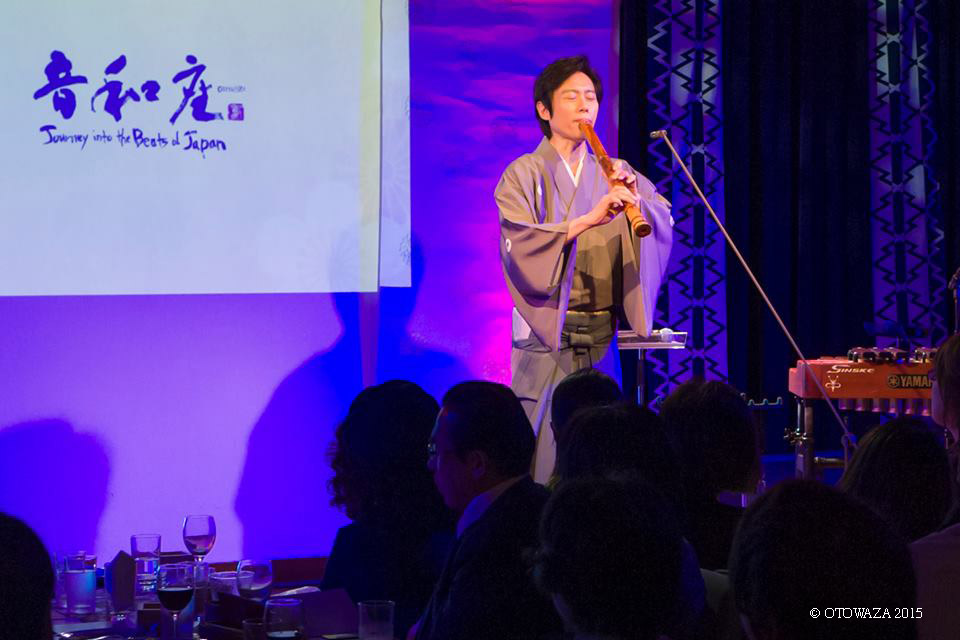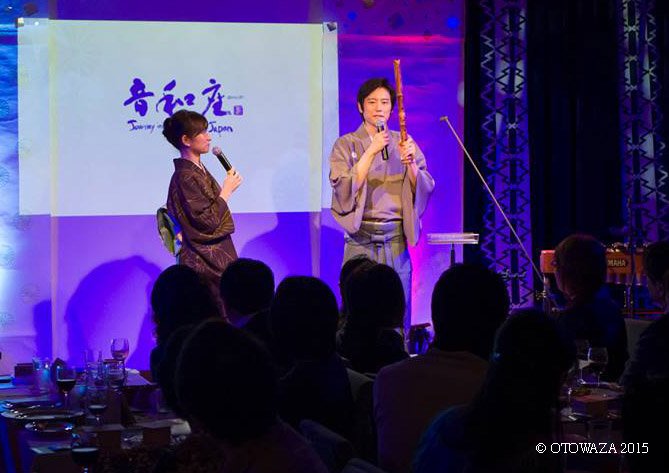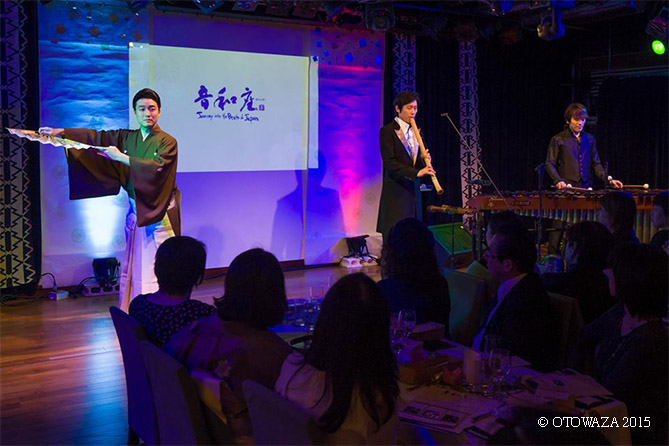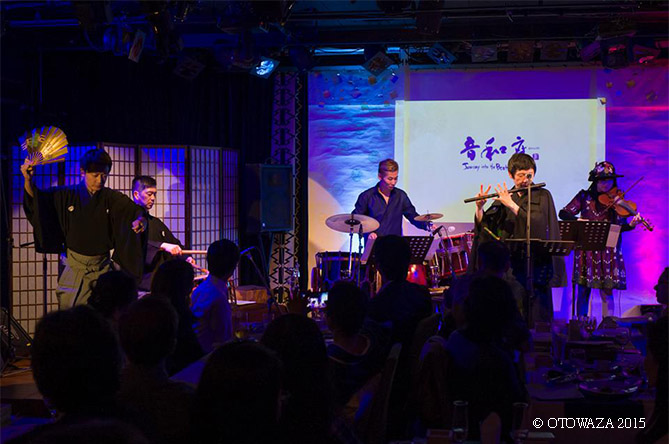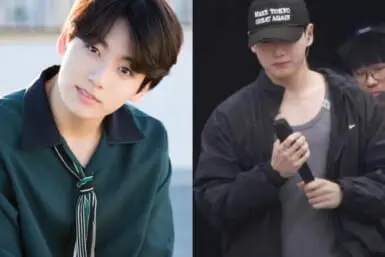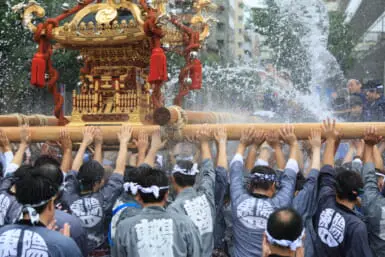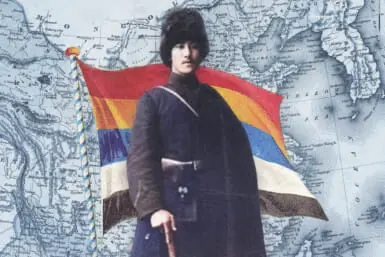An opening series of concerts by the “Otowaza” project sets the stage for an intriguing mix of Japanese music in the year to come.
By Alec Jordan
The shakuhachi is an instrument that people immediately associate with Japan. Fashioned from a single piece of bamboo, and known for its haunting, sometimes extraordinarily dramatic tone, it’s hard to hear it played and not think of a scene from a samurai drama. Given its rich sound, it’s also no surprise that it is connected to a variety of spiritual traditions, perhaps most colorfully the itinerant komuso – the priests of nothingness.
These musician monks were members of a sect of Zen Buddhism who used the performance of sacred songs as a means of focusing their minds and giving musical expression to the search for and attainment of enlightenment. They were also known for their striking appearance: along with an ornate costume that included multilayered garments and other colorful accessories was a basket that these traveling priests wore over their heads. It was a practice meant to tame the ego – and possibly prevent curious would-be musicians from learning their techniques.
Although the practice was abolished in the Meiji Restoration (as it turned out, monks who traveled in disguise also made good spies), the shakuhachi’s evocation of other realms continues to this day. Given the spiritual resonance of this particular instrument, it seems fitting that one of the first songs that Dozan Fujiwara, a modern master of the shakuhachi, learned was the hymn “Amazing Grace.” It was also the first song with which he began his concert in the newly launched “Otowaza – Journey into the Beats of Japan” project last week. This concert series aims to introduce both Japanese and international audiences to the sounds of traditional Japanese music, in familiar and more modern arrangements. The song was a demonstration that – in the hands of a skilled player – the shakuhachi is capable of a great delicacy of sound that fits both Western and Japanese musical settings.
He would quickly be joined on stage by the marimba player SINSKE, and while the pairing of the two instruments might seem incongruous at first, the woody sounds of the xylophone’s larger cousin proved to be an excellent match for the flute. The two musicians have collaborated with one another for several years, and it was easy to see that they play with a rapport born from hours spent on stage together. During the evening, they made their way through a repertoire that included traditional Japanese songs, tunes that would be familiar to fans of jazz and musical, arrangements of modern classical works, and original compositions penned by both performers. This final category of pieces really showed what the two instruments were capable of, at times allowing them to take on different musical roles, with the marimba sometimes controlling the melody and the shakuhachi demonstrating that it can handle its own when it comes to percussive sounds. One of the final songs of the night was accompanied by traditional dancer Kikunojyo Onoe, whose choreography provided an excellent match for a piece that shifted between moments of peaceful lyricism and intense drama.
Throughout the evening’s two sets, emcee Miki Sumiyoshi – a bilingual former NHK announcer – served as the host for the evening, and helped to demystify many parts of the traditional songs, and explain a number of details (in Japanese and English). For example, Sumiyoshi’s informal talk with Fujiwara at the beginning of the show revealed that a shakuhachi player controls the pitch and tone of his or her instrument not only through breath control and fingering, but also by movements of the neck: these techniques allow the musician to play an entire scale’s worth of notes on an instrument with only five finger holes.
While the duo of Dozan and SINSKE provided a musical setting that tended towards the tranquil and meditative, the musicians performing on Monday and Wednesday delivered a performance that was a bit more aggressive and dynamic. The group was headed by the Noh flutist (and multi-instrumentalist) Yukihiro Isso and included a violinist, a shamisen player, and percussion. All of the musicians had strong backgrounds in jazz and other forms of improvised music, which came through in their lively interplay.
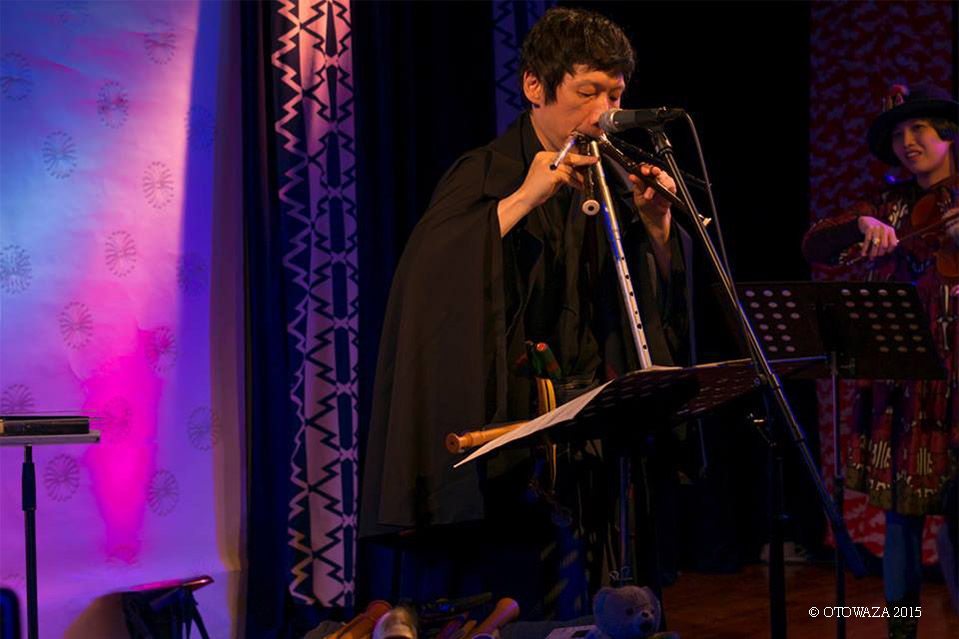
If Rahsaan Roland Kirk ever got to play music for Noh theater, it might have gone like this
Rather than taking place in a traditional concert hall, all three performances were held at Roppongi CLAPS, a restaurant/bar that features a mix of European and Japanese cuisine. Being able to eat and sample fine sake during the evening kept the feeling of the evening relaxed and informal, and made it that much easier to enjoy the music.
Last week’s performances, held before the busy holiday season, were just a taste of what is to come with Otowaza. Dozan and Isso are both musical directors for this fledgling group, and will be bringing more concerts that blend Japanese and Western, traditional and modern, in the year to come. Keep an eye on their coming event schedules at http://otowaza.jp/?lang=en.

